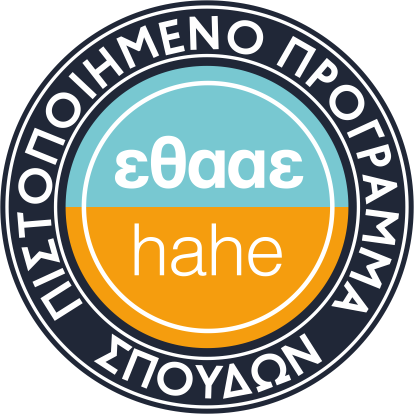Πάσχου Περιστέρα

Αναπληρώτρια Καθηγήτρια Γενετικής Πληθυσμών
http://utopia.duth.gr/~ppaschou/
Επικοινωνία
Γραφείο: Ισόγειο, κτίριο 10
Τηλέφωνο: +30-25510-30658
Τηλεομοιοτυπία: +30-25510-30613
Ηλεκτρονικό ταχυδρομείο:
Eργαστήριο: 1ος όροφος, κτίριο 10
Τηλέφωνο εργαστηρίου: +30-25510-30497
Εκπαίδευση
2005 Πανεπιστήμιο Yale, Ιατρική Σχολή, Τμήμα Γενετικής - Ειδικότητα στην Κλινική Μοριακή Γενετική - Diplomate of the American Board of Medical Genetics
2002 Εθνικό και Καποδιστριακό Πανεπιστήμιο Αθηνών – PhD
2000 Πανεπιστήμιο της Οξφόρδης, «Wellcome Trust Centre for Human Genetics»
1999 Εθνικό και Καποδιστριακό Πανεπιστήμιο Αθηνών – MSc, BSc
Επιστημονικά Ενδιαφέροντα
Γενετική ανθρώπινων πληθυσμών, Πληθυσμιακή δομή, Γενετική επιδημιολογία, Γενετική βάση πολυπαραγοντικών νοσημάτων, Μελέτες συσχέτισης, Ανάλυση δεδομένων ολόκληρου του γονιδιώματος, Μεταφραστική γονιδιωματική.
Διδασκαλία
Γενετική Πληθυσμών και Εξέλιξη
Επιλεγμένες Δημοσιεύσεις
1. Hughey JR, Paschou P, Drineas P, Mastropaolo D, Lotakis DM, Navas PA, Michalodimitrakis M, Stamatoyannopoulos JA, Stamatoyannopoulos G (2013). A European Population in the Minoan Bronze Age Crete. Nature Communications, 4: 1861. (IF: 10.01)
2. Karagiannidis I, Dehning S, Sandor P, Tarnok Z, Rizzo R, Wolanczyk T, Madruga-Garrido M, Hebebrand J, Nöthen MM, Lehmkuhl G, Farkas L, Nagy P, Szymanska U, Anastasiou Z, Stathias V, Androutsos C, Tsironi V, Koumoula A, Barta C, Zill P, Mir P, Müller N, Barr C, Paschou P (2013). Support of the histaminergic hypothesis in Tourette syndrome: association of the histamine decarboxylase gene in a large sample of families. J Med Genet 50(11):760-764. (IF: 5.70) Editor’s choice
3. Paschou P (2013). The genetic basis of Gilles de la Tourette Syndrome. Neurosci Biobehav Rev, 37(6):1026-39. (IF: 9.44) Invited Review
4. Stathias V, Sotiris G, Karagiannidis I, Bourikas G, Martinis G, Papazoglou D, Tavridou A, Papanas N, Maltezos E, Theodoridis M, Vargemezis V, Manolopoulos VG, Speed WC, Kidd JR, Kidd KK, Drineas P, Paschou P (2012). Exploring genomic structure differences and similarities between the Greek and European HapMap populations; implications for association studies. Annals of Human Genetics, 76(6): 472-483. (IF: 2.21)
5. Paschou P, Stylianopoulou E, Karagiannidis I, Rizzo R, Tarnok Z, Wolanczyk T, Hebebrand J, Nöthen MM, Lehmkuhl G, Farkas L, Nagy P, Szymanska U, Lykidis D, Androutsos C, Tsironi V, Koumoula A, Barta C, Klidonas S, Ypsilantis P, Simopoulos C, See T, Skavdis G, Grigoriou M (2012). Evaluation of the LIM homeobox genes LHX6 and LHX8 as candidates for Tourette Syndrome. Genes Brain Behav, 11 (4): 444-451 (IF: 3.59)
6. Karagiannidis I, Rizzo R, Tarnok Z, Wolanczyk T, Hebebrand J, Noethen MM, Lehmkuhl G, Farkas L, Nagy P, Barta C, Szymanska U, Panteloglou G, Miranda DM, Feng Y, Sandor P, Barr C, Paschou P (2012). The most common worldwide haplotype across SLITRK1 is associated with Tourette Syndrome in a large sample of families. Molecular Psychiatry 17(7): 665-668 (IF: 14.89)
7. Paschou P, Drineas P, Lewis J, Nievergelt CM, Nickerson DA, Smith JD, Ridker PM, Chasman DI, Krauss RM, Ziv E (2008). Tracing sub-structure in the European American population with PCA-informative markers. PLoS Genetics 4:e1000114. (IF: 8.51)
8. Paschou P, Ziv E, Burchard EG, ChoudryS, Rodriguez-Cintron W, Mahoney MW, Drineas P (2007). PCA-correlated SNPs for structure identification in worldwide human populations. PLoS Genetics 3, e160. . (IF: 8.51)
9. Paschou P, Mahoney M, Pakstis A, Kidd JR, Kidd KK, Drineas P (2007). Inter- and intrapopulation genotype reconstruction from tagging SNPs. Genome Research 17, 96-107. (IF: 14.39)
10. Paschou P, Feng Y, Pakstis AJ, Speed WC, DeMille MM, Kidd JR, Jaghori B, Kurlan R, Pauls DL, Sandor P, Barr CL, Kidd KK (2004). Indications of linkage and association of Gilles de la Tourette syndrome in two independent family samples: 17q25 is a putative susceptibility region. Am J Hum Genet 75,545-560. (IF: 11.20)



